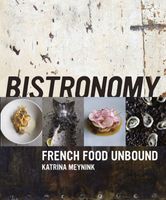Advertisement
Terroir
Published 2014
You don’t have to spend much time in a fa-aancy restaurant before someone mentions the T word.
As its basic premise, the elusive French concept of terroir (which has no exact translation) is about ‘local’, ‘seasonal’ and understanding the characteristics of a specific place — the climate, sunshine, rain, geology, plants and animals — and the impact these elements will have on the taste of a product. Every decade or so the concept and all that comes with it flares up as a food trend. It becomes the marketing speak de rigueur in kitchens across the world and the very simple, logical connection between locality, seasons and freshness has become beaten, bloodied and commercialised. Suddenly, to fish, hunt, forage and engage with food — to ‘be seasonal’ — has morphed into opportunistic fanfare to plaster on a menu or restaurant website. Menu descriptions proclaim an unbridled commitment to the locavore cause, chefs powering their stoves by the wind of their own monologues, throwing around words like ‘sustainability’ and ‘locality’ in efforts to bolster their foodie credentials. In clamouring to regurgitate such philosophies they do so without the same grasp, reach, ambition and rigour of the greats. Long before them it was Paul Bocuse, Frédy Girardet, Michel Guérard, Marc Veyrat: these were the kings of nouvelle cuisine who were champions of the techniques of classic cooking wedded to rigorously seasonal and local ingredients. Then there is the molecular likes of Ferran Adrià, the purity and seasonality of René Redzepi and the eating-all-the-bits mentality of Fergus Henderson.

